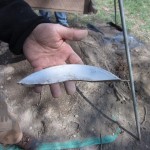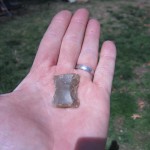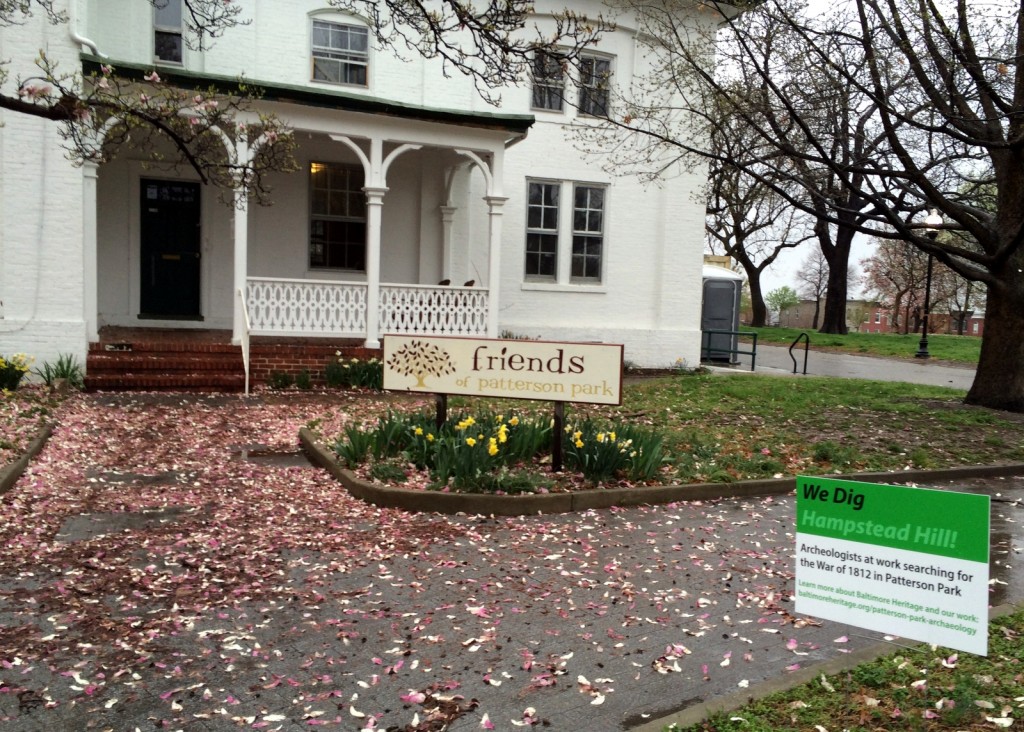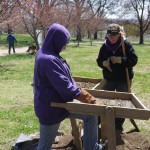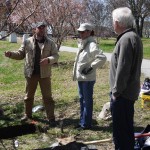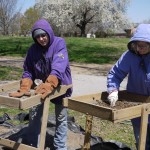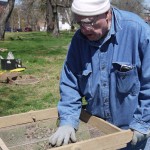Last week’s remote sensing survey in Patterson Park challenged our project team with rain, snow, chilly temperatures and an initially elusive search for the 1812 earthworks. Fortunately, the team survived the bad weather and successfully gathered critical data to guide our field excavations later this month.
Fieldwork Director Greg Katz and Dr. Tim Horsley shared their reflections on the week’s work by email. Greg was excited about the traces of the earthworks we found through Tim’s survey:
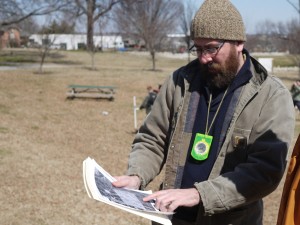 I would say that the results of the work last week exceeded my expectations – I was not expecting to find much of the earthworks beyond what you can see looking at the current landscape. Finding more was a big and pleasant surprise. I really enjoyed working with the Archeological Society of Maryland volunteers. I found them to be enthusiastic and eager to learn… The weather was really a big challenge last week. When you schedule weeks in advance and have a specialist traveling 800 miles to be there, you have to work in the rain and snow.
I would say that the results of the work last week exceeded my expectations – I was not expecting to find much of the earthworks beyond what you can see looking at the current landscape. Finding more was a big and pleasant surprise. I really enjoyed working with the Archeological Society of Maryland volunteers. I found them to be enthusiastic and eager to learn… The weather was really a big challenge last week. When you schedule weeks in advance and have a specialist traveling 800 miles to be there, you have to work in the rain and snow.
 Tim (our long-distance specialist) shared his own reflections and satisfaction with a “very productive week” in the park:
Tim (our long-distance specialist) shared his own reflections and satisfaction with a “very productive week” in the park:
Friday went well, and I calculate that I collected over 6 miles of ground penetrating radar (GPR) data – much of which was up and down that slope! My very preliminary look at the GPR data suggests that we have successfully detected the ditch continuing north and south from the bastion… Through the week we collected a total of 3 acres of magnetometer data, and although these are largely blown out by utilities and modern iron, there is some useful information in there. Between the various data sets, I’m certainly going to be able to suggest locations for excavation trenches, both to hit some interesting features, and to hopefully avoid hitting utilities!
Special thanks to the Baltimore Sun, the Baltimore Guide and WJZ News for sharing the story of our investigation last week! Please don’t forget to check our our project page for more information about the investigation and the history of Hampstead Hill and Patterson Park.


